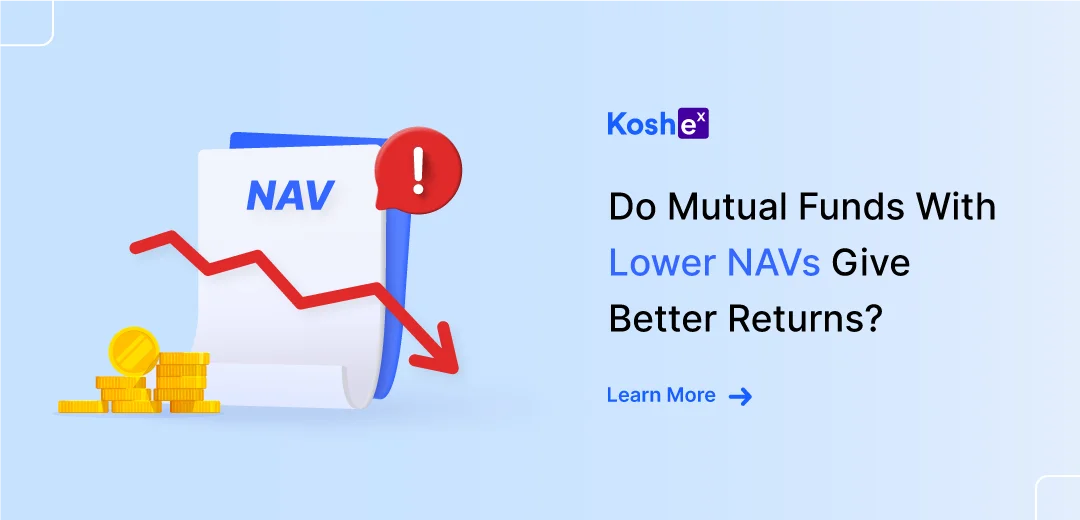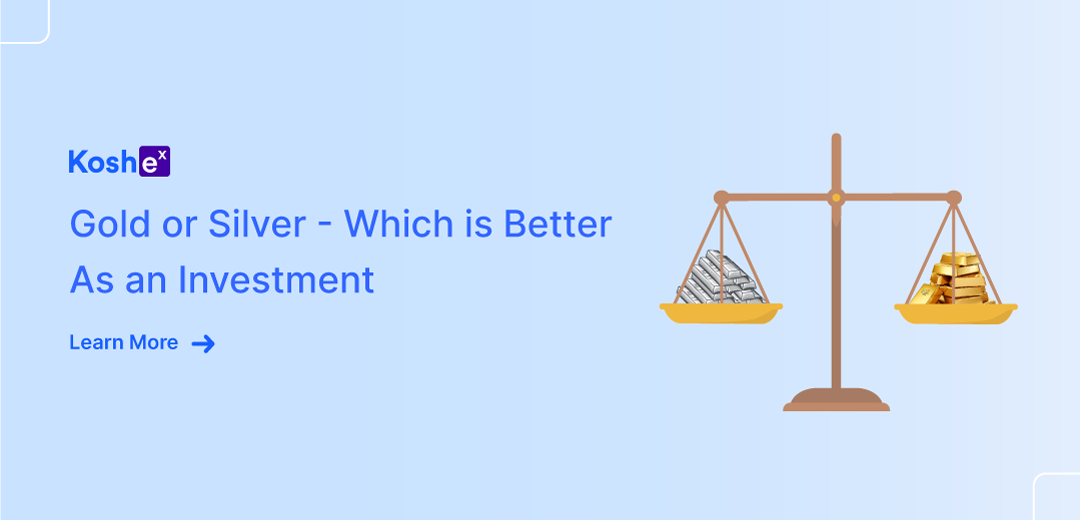Mutual funds are an essential financial instrument for most investors. Some mutual funds outperform others, and the more risk we take, the greater our chances of success.
The AUM (Asset under management) is a mutual fund company’s total assets. AUM does not include the fund company’s “cash balance”—cash on hand. The MF industry has grown from 20.40 trillion on September 30, 2017, to 38.42 trillion on September 30, 2022, which is about a twofold increase in 5 years.
This article will explore what mutual funds with lower NAVs stand for and how they can help investors make more money.
What is NAV, and How is it Calculated?
An investment company’s “net asset value” or “NAV” is a key metric used to compare the performance of different mutual funds.
The NAV calculates the company’s total assets minus its total liabilities, divided by the number of shares outstanding. The lower the NAV, the better the fund’s performance relative to other funds in its category.
NAV is not a measure of how much money an investor will make with a particular fund; it is simply an indicator of how well-funded it is. Investors should always consult their financial advisors before making any investment decisions.
Factors That Impact the NAV of Mutual Funds
Several factors can impact the NAVs of mutual funds. The type of fund structure (direct or regular plans) and the number of dividend-paying units can affect the dividend paid out. Expense ratios are a tool used to measure the cost of equity funds.
The expense ratio is the amount of money a mutual fund charges for money management. Stock funds usually cost less than mutual funds.
- Type of fund structure (direct or regular plans)
Mutual funds come in two types: direct plans and regular plans. The mutual fund shareholder owns the fund shares in a direct plan. This means the shareholder is responsible for paying any associated expenses, such as annual fees.
In a regular plan, the mutual fund investor owns shares in a trust that holds the fund’s assets. However, regular plans also tend to have higher management fees because they involve more fund expenses.
Both plans have pros and cons. Direct plans have higher returns since shareholders pay all fund share expenses.
They are also riskier because shareholders are liable for investment losses. Regular plans provide smaller returns than direct plans but are safer and cheaper. It helps to do your research before investing in a mutual fund scheme.
- Number of units with a dividend payout option
Mutual funds with a dividend payout option can be better for investors seeking regular payments. There are several factors to consider before selecting a mutual fund scheme with this feature, including the fund’s NAV and payout ratio.
A higher NAV indicates that the fund is worth more than its outstanding shares, providing a higher return on investment. Equity funds with a payout ratio below 80% typically pay out dividends annually, while those above 80% may only do so every other year or less frequently.
A payout ratio is the percentage of the fund’s assets that are returned to investors based on the fund’s performance.
It can be calculated by dividing a fund’s total profits by its total assets and then by the amount of money invested in the fund. It is essential to read the prospectus and compare the fund’s features with those of other funds before making an investment decision.
- The fund’s expense ratio
There is much discussion these days regarding fund expenses and whether they affect returns. Many believe that funds with a lower NAV will offer better overall returns because they can charge lower fees. However, this theory is yet to be proven.
When evaluating fund expense ratios, there are a few factors to consider. First, it’s essential to understand that only some expenses are created equal.
Some costs, like fund management fees, are necessary for running the fund and should be considered when comparing returns. Other expenses, like shareholder advisory fees and performance-based fees, can be excessive and may have a negative impact on returns.
Another factor to consider is how efficiently the fund is using its assets. A higher expense ratio could indicate a poorly run fund spending too much money on overhead rather than investing in the stock market and bonds. Ultimately, looking at all the factors is essential before deciding which funds to invest in.
Are Mutual Funds With Lower NAVs Better?
Mutual funds with lower net asset values (NAVs) offer investors better returns than those with higher NAVs because they’re cheaper to buy.
For most people, investing in funds with lower net asset values is a good idea. A mutual fund’s NAV is the value of its assets minus liabilities, including cash and investments.
We want to invest in mutual funds with lower NAVs because they are cheaper to buy.
The cost of buying a mutual fund can be as much as 1%- 2.5 % of its net asset value (NAV). A low-cost mutual fund can save you money on your investments by lowering your total cost basis—the amount of money you have invested in the fund—and allowing you to make more money on your investment over time.
It’s essential to consider the financial situation and goals before deciding to invest in mutual funds.
Are Direct Plans Worth It?
Mutual funds with lower NAVs may seem to be a better option, but does this translate into better investment returns?
NAV is the market value of a mutual fund or Exchange-Traded Fund (ETF) after adjusting for any liabilities incurred by the fund. A fund with a lower NAV may be worth less because it has more liabilities than assets. This means that if one were to sell their fund shares, they would receive less money than if they had sold shares of a fund with a higher NAV.
However, there are other factors to consider when investing in a mutual fund scheme. For example, some funds may have reinvestment opportunities that provide added upside potential. Additionally, many funds charge relatively low fees, which can help offset any potential decrease in NAV due to higher liabilities. Therefore, while it is important to understand a fund’s NAV before investing, it is also essential to look at other factors before investing.
NAV’s Impact on Fund Performance
When comparing mutual funds with lower NAVs, it’s essential to consider other factors such as fund size, investment mix, and fees. A small-cap fund with a higher expense ratio may have a lower NAV but may still provide better returns than a larger, more expensive fund.
It’s also important to remember that regardless of their NAVs, all mutual funds are subject to market volatility. So if you’re looking for long-term stability, choose a fund with a low price/earnings (P/E) ratio. Low P/E ratios can save money, but they’re only one factor when choosing a fund. The P/E ratio shows the stock price, not the firm value. The price-to-earnings ratio is a financial ratio that compares the price of a stock to its annual earnings per share.
The formula is P/E = Market Price ÷ Earnings Per Share.
Conclusion
Numerous factors can influence a mutual fund’s performance. But if the NAV is low, you may have a higher return potential. When looking for a mutual fund, you should look into how it has performed in the past and how much it costs.
It would be best if you also talked to a financial advisor to get the best advice for your situation—research mutual fund schemes before choosing one. Funds with lower expense ratios are more profitable, so investors looking for high returns may want to look for mutual funds with lower NAVs.
NAV is a crucial aspect to consider. Mutual funds with a lower NAV typically outperform higher NAV funds since some mutual funds with lower NAV have more assets under management and a higher return on investment.
Mutual funds are suitably regulated to manage risks, and the chances of completely losing your investment are virtually nonexistent. To know more about mutual funds and grow your portfolio, sign up with Koshex.
FAQs
- What does NAV mean?
NAV stands for Net Asset Value. It is the value of all the assets in a mutual fund minus any liabilities divided by the number of shares outstanding.
- What is the relationship between a fund’s NAV and its performance?
There is no direct relationship between a fund’s NAV and its performance. A fund with a higher NAV does not necessarily perform better than one with a lower NAV









Leave a Comment